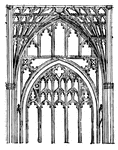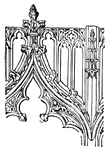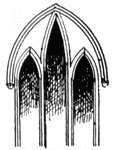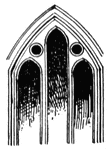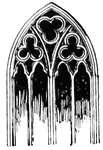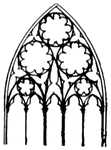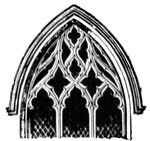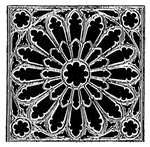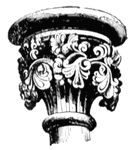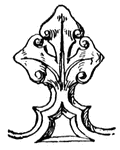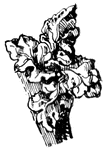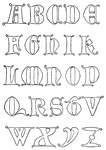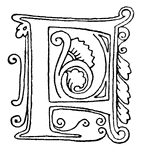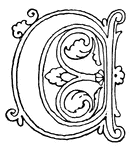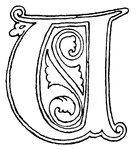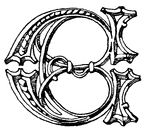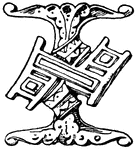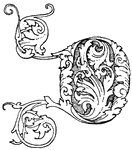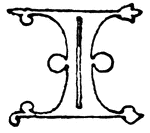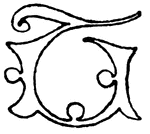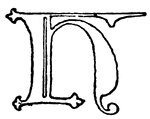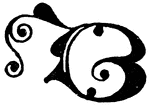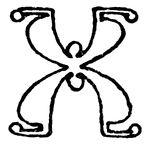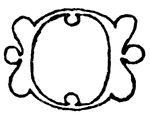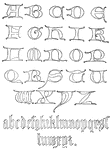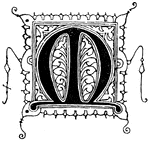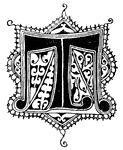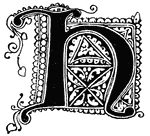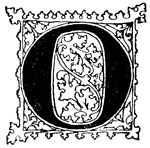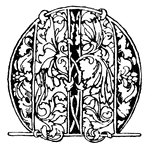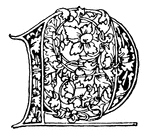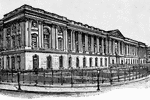
Chenonceaux Chateau
A well preserved building, in which Gothic forms are everwhere perceptible, under the veil of the Renaissance…

Ballflower
A ball-flower is an ornament resembling a ball enclosed in a circular flower—one of the characteristics…

Canopy Detail
A canopy is the projecting moulding that surrounds the arches and heads of Gothic niches.
Perpendicular Style
The third and last of the pointed or Gothic styles, also called the Florid style.

Sxon Architecture
Sxon Architecture comprehends all English architecture previous to the Gothic style, which is characterized…
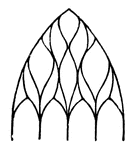
Tracery
Tracery is the intersection in various forms of the mullions in the head of a window or screen.
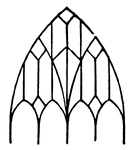
Tracery
Tracery is the intersection in various forms of the mullions in the head of a window or screen.

Tracery
Tracery is the intersection in various forms of the mullions in the head of a window or screen.

Tracery
Tracery is the intersection in various forms of the mullions in the head of a window or screen.

Abacus
"Abacus is a Latin term applied to an apparatus used by the Chinese for facilitating arithmetical operations,…
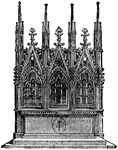
Gothic Altar
"Gothic Altar. An Altar is an erection made for the offering of sacrifices for memorial purposes, or…

Balcony of House in Nuremburg
"Nuremburg is a city in the Bavarian province of Middle Franconia, Germany; on the Pegnitz river; 95…
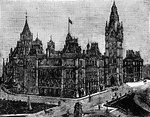
Ottawa Main Parliament Building
"Ottawa is a city, county seat of Carleton co., Ontario, and capital of the Dominion of Canada; at the…
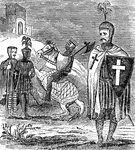
Chivalry and knight-errantry
"The chivalry of the gothic nations began in the woods of Germany. No youth was then permitted to assume…


